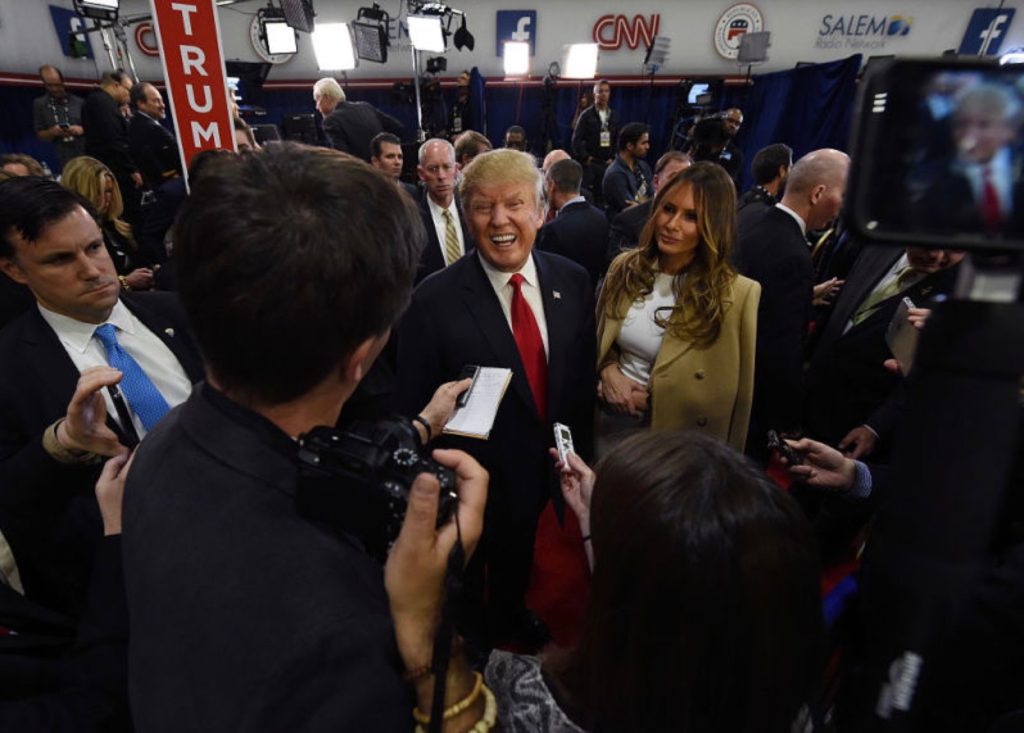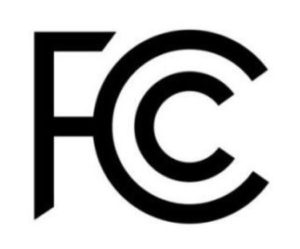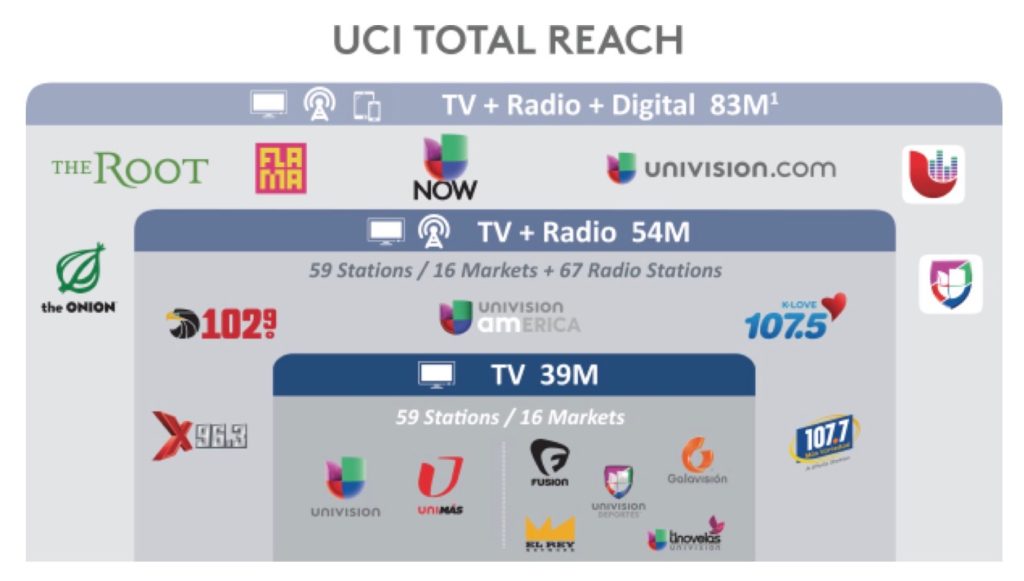Make The Media Better? Try Diversity
Make the Media Better? Try Diversity
By Hamilton Nolan, Deadspin
Is that a smile?
Donald Trump won, and the media is grasping for answers as to why we didn’t predict it. Already, you can see the seeds of many bad solutions forming.
The New York Times, a useful enough stand-in for the prestige mainstream media, did communicate in both the tone and substance of its coverage that Hillary Clinton was overwhelmingly likely to win the election. It is fair and appropriate for the Times and all of the other news outlets that did the same to stage a post-mortem and figure out where their prediction and analysis went wrong. (News outlets specifically need to focus on the “Our objective analysis of facts tells us that Trump will lose the election” aspect of their reporting, not the “Here are a thousand legitimate news stories about bad things Trump has done” aspect. Legitimate reporting is legitimate. The failure in this case was one of analysis.) This quote from Times editor Dean Baquet is very representative of the post-election reflections of many media big shots: “If I have a mea culpa for journalists and journalism, it’s that we’ve got to do a much better job of being on the road, out in the country, talking to different kinds of people than the people we talk to — especially if you happen to be a New York-based news organization — and remind ourselves that New York is not the real world.”
Baquet’s thoughts have been echoed in varying forms by other walking representations of the concept of “media elites,” as if they had just awoken from a trance—damn … we’re elites! Perhaps this is bad? Unfortunately, if you understand how prestige media outlets tend to react to things like this, it is possible to discern that the post-Trump media reformation is already beginning to go off the rails.
The problem is not that the New York Times (who we are using here as a representative of the prestige media at large) failed to cover “middle America.” The problem is that the New York Times covers middle America as if it was venturing into a strange and foreign land where the most mundane aspects of life must be explained as exotic novelties. In Kansas City they eat “barbecue”—crazy! The sincere efforts of the Times to cover this entire nation often devolve into farce. It’s not that they’re not trying. It’s that they don’t have the proper tools.
What does the media need? Diversity. Period. Diversity in the newsrooms, diversity among editors, diversity among executives. All news publications are ultimately the product of the collective lived experience of the people who put them out. There is no super-intelligent omniscient robot deciding what goes in the New York Times; it is the product of a bunch of people sitting in a room, using their own best judgment. Their own best judgment is shaped by their own lives. If you do not have people in that room who lived a very wide array of different types of lives, your publication will have holes. This is why the New York Times can write very credible analyses of barbecue restaurants in Williamsburg, yet a trip to Kansas City comes off as the equivalent of a trip to the moon.
Of course, every media outlet will tell you they value diversity. The deeper problem is what places like the New York Times think diversity is. The Times’s approach to diversity is to hire a black person who went to Columbia Journalism School and a woman who went to Princeton and someone who grew up in rural West Virginia who went to Harvard. This is not what diversity means. Elite institutions that can recruit anyone they want often achieve a surface-level visual diversity that leaves in place the fundamental problem of everyone seeing the world in basically the same way. The media needs racial diversity. It needs gender diversity. It needs geographic diversity. But it also needs economic diversity, a diversity of background and class, and this has been a resolute blind spot.
Many of the smartest writers in America never graduated from college. I’ve worked with them! Writing is a talent that can be developed in isolation and is distributed widely. Some of the most perceptive political commentators on America are random people on Twitter who have day jobs. There are great journalists working at crappy small town papers and dreary trade magazines and in the black press and all over everywhere. Go get them! You’re the fucking New York Times. You can hire anyone. Going out and raiding other prestige publications for non-white-male writers and then being satisfied that you have achieved diversity ensures you will never achieve real diversity. (Let’s not even discuss the misguided quest for ideological diversity, which is responsible for the career of David Brooks.)
The “elite media,” to the extent such a thing still exists, must recruit young writers who are not Ivy League graduates, who may not be friends with people who already work there, and who may not be wealthy enough to run in the same social circles. These are the writers who will bring a true diversity of lived experience to your publication, which will translate into a true diversity of stories, and will hopefully prevent you from sounding ridiculous when you cover certain people, places, and things. And this diverse staff must constantly be replenished. Once someone has spent a decade working for the New York Times, they have probably ceased to provide a lot of economic diversity.
Also, the problem is not that “New York is not the real world.” New York is just fine. Queens—a New York borough!—is one of the most diverse places in America. Stop spending so much time in Soho House. It’s a big city.
Let’s mention a related issue that is the subject of much agitation now: polls. The polls in this election were wrong. Does this mean that it would have been better to predict the winner of the election by “talking to people” and counting yard signs? No. Looking at yard signs is how Peggy Noonan came to believe that Mitt Romney would win in 2012. It is not a reliable predictive method. In fact, do you know what the only legitimate way is to take the political temperature of a nation of 300 million people scattered across 3.8 million square miles?
If the polls were flawed during this election, that presents an engineering problem. How can we make the polls more accurate? Do they need better sampling methods? Better statistical analysis? Is it simply that we should be clearer about the margin for error and not present polls as so definitive? These are questions for polling experts, who should refine the polls so that they both reflect the vote as accurately as possible and are as honest as possible about their own shortcomings. No one disagrees with this, and I have no doubt that these efforts are already underway.
But let’s not all float off into space here. I’m from Florida. Could I have told you that lots of people in Florida would vote for Trump? Sure! Florida has many racists. But could I have predicted the exact percentage breakdown of the vote? No. That’s lunacy. You need polls for that. Should the media, in an effort to report on the probable voting tendencies of more than 100 million people, rely less on polls and more on “We talked to the lunch crowd at the diner by the old ball bearings factory?” No. Not unless the lunch crowd is 100 million people.
The makeup of the media should reflect the makeup of the people they cover.
Diversify, and watch a lot of problems solve themselves.
Political Reporters Know Nothing







